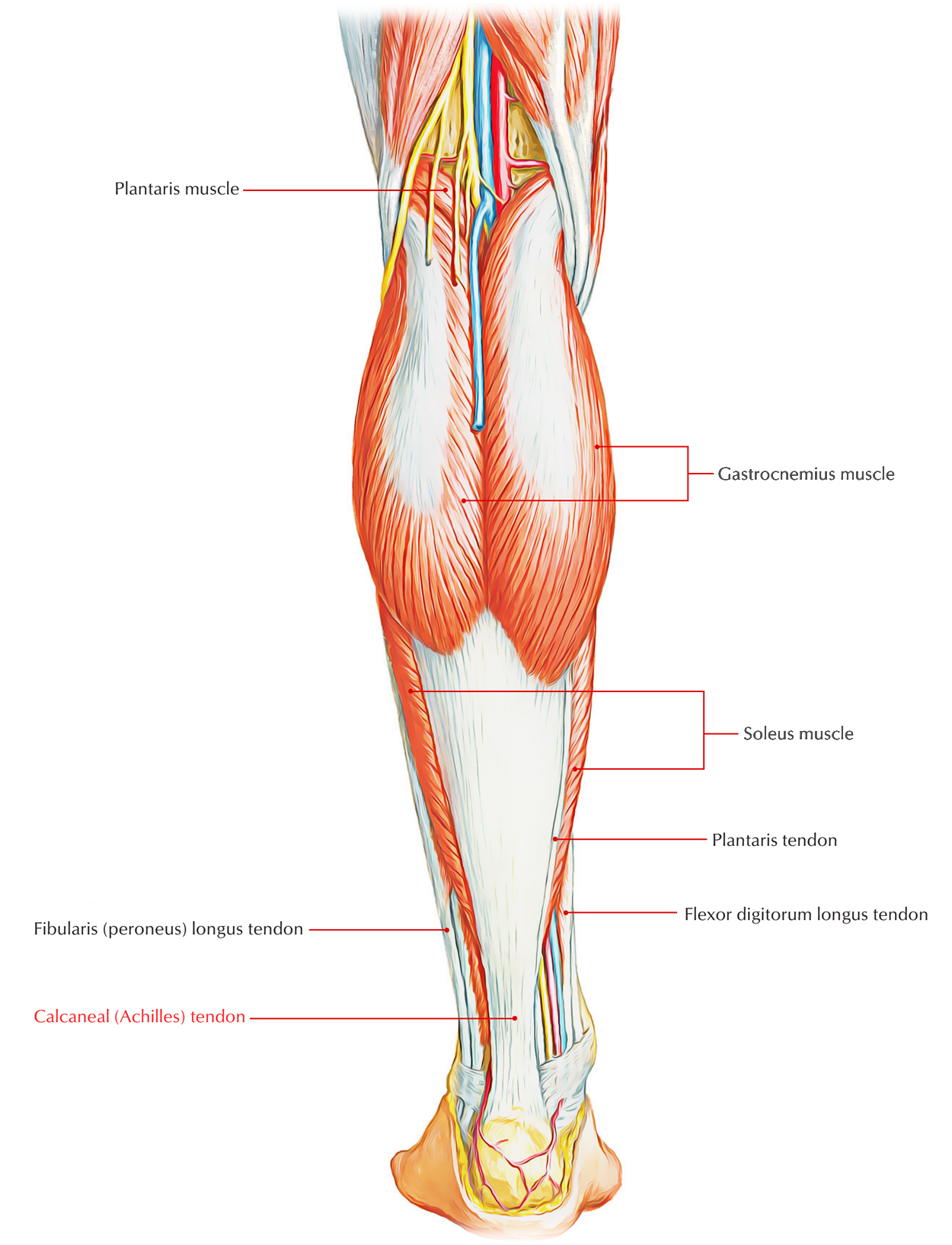The Achilles tendon is the strongest and largest tendon in the body.The gastrocnemius and soleus muscles (calf muscles) unite into one strap of tissue that transforms into the Achilles tendon at the low end of the calf.
The Achilles tendon then inserts into the calcaneus. Achilles tendon at the heel is supported by the Small sacs of fluid called bursae.The Achilles tendon is prone to both acute and chronic injuries and is directly or indirectly implicated in several pathologic disorders of the foot and ankle due to its size and functional demands.
Nature of Achillis Tendon
Both heads of the gastrocnemius and the soleus muscle combine to form Achilles tendon. Together these structures are commonly referred to as the “gastroesoleus complex.”
It is subject to tensile forces of:
- Up to 12.5 times body weight (9 kilonewton [kN]) throughout sprinting.
- Six to eight times body weight during athletic activity such as jumping or cycling.

Calcaneal (Achilles) Tendon
Origins of Achillis Tendon
The Achilles tendon originates in the middle of the lower leg as the confluence of the tendons of the gastrocnemius and soleus muscles at the gastroesoleus junction.
Insertion of Achillis Tendon
- The Achilles tendon enters on the middle third of the posterior surface of the calcaneal tuberosity, beginning around 1 cm distal to the most superior border of the bone.
- Typically the distance of insertion is longer on the medial side. More distally the tendon fibers change into the periosteum of the calcaneus.
- In newborn children there is a constant heavy layer of collagen Fibers connecting the Achilles tendon and the plantar fascia.
- The variety of these fibers decreases with age and they eventually disappear completely.
Arterial Supply of Achillis Tendon
The majority of the Achilles tendon is vascularized all over its length by branches of the posterior tibial artery.
The Achilles tendon gets its blood supply from three primary sources:
- The intrinsic vascular systems at the myotendinous junction.
- The osteotendinous junction.
- The extrinsic segmental vascular system through the paratenon surrounding the tendon.
Proximal part of the tendon receives additional blood supply through branch of the posterior tibial artery.
Distally the rete artcriosum calcaneum formed by branches:
- The posterior tibial.
- Peroneal.
- Lateral plantar arteries.
Nerve Supply of Achillis Tendon
- The Achilles tendon is supplied by the sural nerve.
- The sural nerve is a purely sensory nerve, formed by the combination of the medial cutaneous branch of the tibial nerve and the peroneal communicating branch off the lateral sural cutaneous nerve emerging from the common peroneal nerve.
Actions of Achillis Tendon
- The Achilles tendon pulls on the heel when the calf muscles flex. The gastrocnemius and soleus muscles cause plantar flexion of the foot at the ankle.
- This movement allows body to stand on toes when walking, running, or jumping.
Clinical Significance of Achillis Tendon
Achilles Tendon Tear
Tears of the Achilles tendon can be tiny (microtears), or large, causing pain, swelling, and impaired movement. They may occur suddenly throughout activity, or gradually overtime.
Achilles Tendon Rupture
A complete rupture ofthe Achilles tendon may make a “pop” sound, followed by pain and swelling ofthe lower leg. Dealing with an Achilles tendon rupture requires surgery or long-lasting immobilization of the ankle.
Achilles Tendinitis (Tendonitis)
Regular activity (running or walking) can gradually inflame end point of the Achilles tendon, causing pain and stiffness at the back of the heel. Achilles Tendinitis commonly affects athletes.
Common symptoms of Achilles tendinitis are burning pain which increases with regular activity. The pain can be felt near the heel bone or long the tendon.
To heal the muscle:
- Take proper rest.
- Ice the injured muscle.
- Do proper stretching as it may speed recovery.

 (52 votes, average: 4.62 out of 5)
(52 votes, average: 4.62 out of 5)